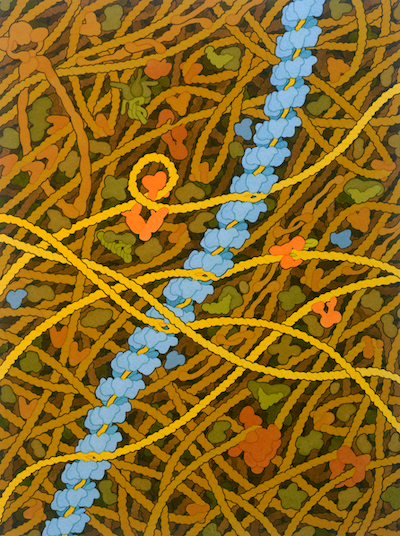Molecular Landscapes by David S. Goodsell
RecA and DNA, 2021
Acknowledgement: Illustration by David S. Goodsell, RCSB Protein Data Bank. doi: 10.2210/rcsb_pdb/goodsell-gallery-038
Recent work has shown that RecA protein (in turquoise) associates with DNA and forms a long, thin filament that stretches through a cell, providing a scaffold to assist with the pairing of homologous strands during DNA repair. Here, several sites in the DNA are temporarily pairing with the RecA DNA filament as the filament searches for an exact pairing.
Read more about the work in:




